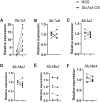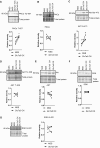Trophoblast-specific overexpression of the LAT1 increases transplacental transport of essential amino acids and fetal growth in mice
- PMID: 38894879
- PMCID: PMC11184900
- DOI: 10.1093/pnasnexus/pgae207
Trophoblast-specific overexpression of the LAT1 increases transplacental transport of essential amino acids and fetal growth in mice
Abstract
Placental System L amino acid transporter activity is decreased in pregnancies complicated by intrauterine growth restriction (IUGR) and increased in fetal overgrowth. However, it is unknown if changes in the expression/activity of placental Large Neutral Amino Acid Transporter Small Subunit 1 (Slc7a5/LAT1) are mechanistically linked to placental function and fetal growth. We hypothesized that trophoblast-specific Slc7a5 overexpression increases placental transport of essential amino acids, activates the placental mechanistic target of rapamycin (mTOR) signaling, and promotes fetal growth in mice. Using lentiviral transduction of blastocysts with a Slc7a5 transgene, we achieved trophoblast-specific overexpression of Slc7a5 (Slc7a5 OX) with increased fetal (+27%) and placental weights (+10%). Trophoblast-specific Slc7a5 overexpression increased trophoblast plasma membrane (TPM) LAT1 protein abundance and TPM System L transporter (+53%) and System A transporter activity (+ 21%). Slc7a5 overexpression also increased transplacental transport of leucine (+ 85%) but not of the System A tracer, 14C-methylamino isobutyric acid, in vivo. Trophoblast-specific overexpression of Slc7a5 activated placental mTORC1, as assessed by increased (+44%) phosphorylation of S6 ribosomal protein (Ser 235/236), and mTORC2 as indicated by phosphorylation of PKCα-Tyr-657 (+47%) and Akt-Ser 473 (+96%). This is the first demonstration that placental transport of essential amino acids is mechanistically linked to fetal growth. The decreased placental System L activity in human IUGR and the increased placental activity of this transporter in some cases of fetal overgrowth may directly contribute to the development of these pregnancy complications.
Keywords: fetal development; leucine; maternal–fetal exchange; mechanistic target of rapamycin; placenta.
© The Author(s) 2024. Published by Oxford University Press on behalf of National Academy of Sciences.
Figures







References
Grants and funding
LinkOut - more resources
Full Text Sources
Research Materials
Miscellaneous

